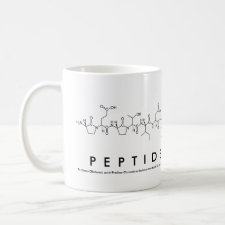
Authors: Gómez-Arribas LN, Darder M, García N, Rodriguez Y, Urraca JL, Moreno-Bondi MC
Article Title: Hierarchically Imprinted Polymer for Peptide Tag Recognition Based on an Oriented Surface Epitope Approach.
Publication date: 2020
Journal: ACS Applied Materials & Interfaces
Volume: 12
Issue: (43)
Page numbers: 49111-49121.
DOI: 10.1021/acsami.0c14846
Abstract: FLAG tag (DYKDDDDK) is a short peptide commonly used for the purification of recombinant proteins. The high price of the affinity columns and their limited reusability are a shortcoming for their widespread use in biotechnology applications. Molecularly imprinted polymers (MIPs) can circumvent some of the limitations of bioaffinity columns for such applications, including long-term stability, reusability, and cost. We report herein the synthesis of MIPs selective to the FLAG tag by hierarchical imprinting. Using the epitope imprinting approach, a 5-amino acid peptide DYKDC was selected as a template and was covalently immobilized on the surface of microporous silica beads, previously functionalized with different aminosilanes, namely, 3-(2-aminoethylamino)propyldimethoxymethylsilane, AEAPMS, and N-(2-aminoethyl)-2,2,4-trimethyl-1-aza-2-silacyclopentane, AETAZS. We investigated the effect of the type of silane on the production of homogeneous silane-grafted layers with the highest extent of silanol condensation as possible using 29Si CP/MAS NMR. We observed that the right orientation of the imprinted cavities can substantially improve analyte recoveries from the MIP. After template and silica removal, the DYKDC-MIPs were used as sorbents for solid-phase extraction (molecularly imprinted solid-phase extraction) of the FLAG peptide, showing that the polymer prepared with AETAZS-bound silica beads contained binding sites more selective to the tag (RMIP-AZA = 87.4% vs RNIP-AZA = 4.1%, n = 3, RSD ≤ 4.2%) than those prepared using AEAPMS (RMIP-DM = 73.4% vs RNIP-DM = 23.2%, n = 3, RSD ≤ 4.0%) as a functionalization agent. An extensive computational molecular modeling study was also conducted, shedding some light on the interaction mechanism between the FLAG peptide and the imprinted template in the binding cavities
Template and target information: epitope, peptide, FLAG tag, DYKDC
Author keywords: Epitope imprinting, FLAG tag, hierarchically imprinted polymer, silane grafting, computational modeling



Join the Society for Molecular Imprinting

New items RSS feed
Sign-up for e-mail updates:
Choose between receiving an occasional newsletter or more frequent e-mail alerts.
Click here to go to the sign-up page.
Is your name elemental or peptidic? Enter your name and find out by clicking either of the buttons below!
Other products you may like:
 MIPdatabase
MIPdatabase









